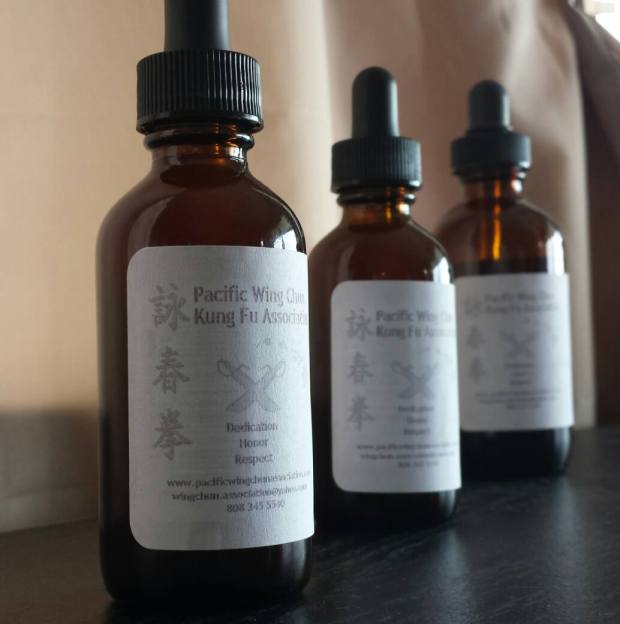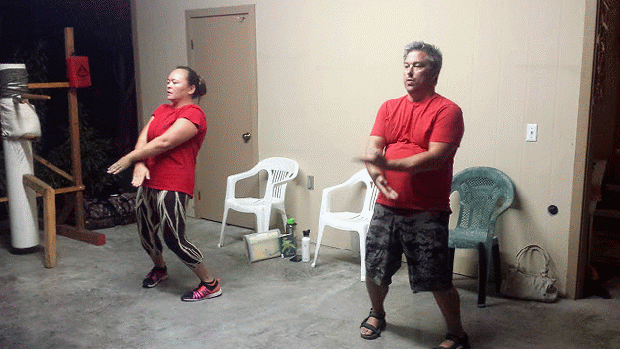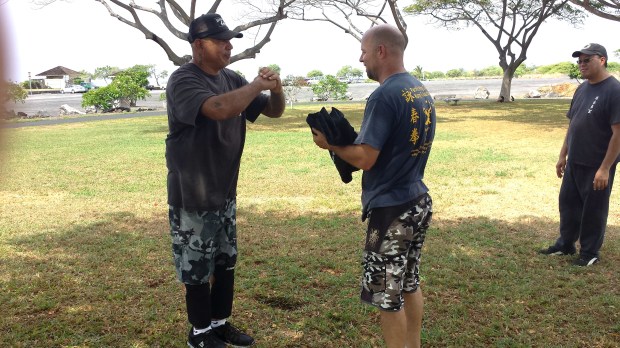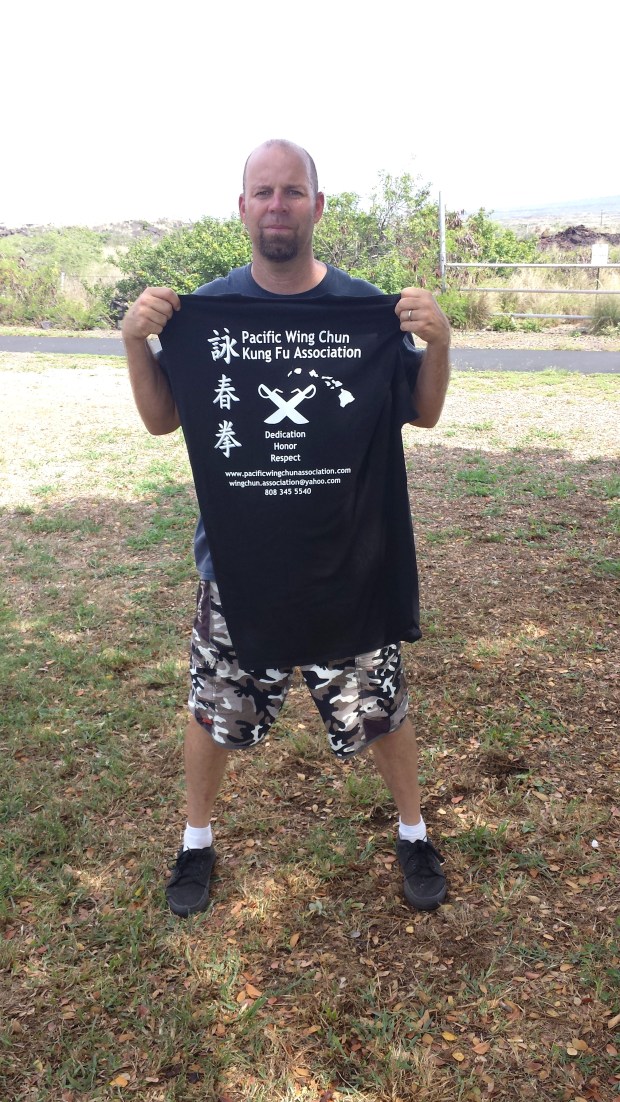Qi Gong is an integral part of Wing Chun. We reap the benefits of it through cultivation of vital energy, and also from the increased effectiveness of our breathing on our physiology. When we practice Sil Nim Tao, we are training our mind and our bodies, part of which includes the breathing technique. My Sifu and Sigung both taught me the importance of breathing as one of the two most important things in kung fu, and based on my experiences, they are absolutely correct. Given two equally matched fighters, the one that can recuperate the fastest through proper breathing technique will likely be the victor. I share some of my own experiences in the paragraphs below that I feel validate the importance of Qi Gong breathing in your kung fu training.
Part of my own workout at home is to run “suicides” after my Wing Chun practice, which I do two to three times each week, depending on how much class/partner time I’ve had. “Suicides” are a jogging/sprinting exercise consisting of direction changes at 10, 20 and 30 yards, i.e., up and back to ten yards, up and back to 20 yards, and up and back to 30 yards, followed by a rest interval. I’ve worked up to doing ten rounds of these, which helps to build both strength and endurance, and to a lesser degree, agility. During the rest periods, I’ve started to integrate Qi Gong breathing with great results compared to normal breathing. The clear benefit of Qi Gong breathing based on my experience is decreased recuperation time during the rest periods, to the point where I can actually gage how many breaths it will take to recuperate from a given volume of exercise.
For those that want to know the science behind recovery from an exercise like this, well here it is. I personally feel that it’s important to understand the science because this knowledge gives you the ability to manipulate it to your own needs. Your body generates energy for short, intense bursts of exercise like sprinting or fighting anaerobically, or without oxygen. When you stop exercising you still breathe heavily because your body is taking in extra oxygen to repay the oxygen debt that was incurred. When you stop the exercise and start to recover you will actually need more oxygen to recover, and hence you breath harder than you do during the exercise. This is called Excess Post Exercise Oxygen Consumption. Here’s why it takes more oxygen to recover: 1) You need to replace the oxygen the body needed but couldn’t get (oxygen deficit), 2) Your breathing and heart rate are elevated to remove CO2, 3) Your body temperature and metabolic rate are increased, and 4) Your Adrenaline and Noradrenaline are increased.
Here’s how Qi Gong works to decrease your recovery time. First, to simplify the paragraph above: your body didn’t get the oxygen that it needed during the exercise and not only needs to make up for what it didn’t have during the exercise, but also needs deal with the other physiological effects that accompany short, intense bursts of exercise. You finish the exercise and your breathing is heavy, and if you are not trained in Qi Gong, it is very inefficient. Qi Gong breathing increases the effectiveness of your breathing by doing two things: 1) increases the total volume of air moving into and out of your lungs through proper breathing, and 2) through the accompanying body motions, effectively forcing the oxygen into your circulatory system, kind of like a turbo charger on a car!
If you don’t have experience with Qi Gong breathing, here’s a brief explanation of proper form. A single breath looks like this: 1) inhale starting at your navel – the tan tien – (newborn babies or young children after vigorous play are a great example as they the diaphragm as the main control point for breathing, ‘belly breathing’); pulling inward toward your spine to help you exhale and pushing outwards to expand your rib cage while breathing in. Actually, if you focus only on the motion and direction of your diaphragm and not directly on breathing, your lungs will fill automatically, 2) next open up your chest cavity and feel the expansion in your lungs. I’m not sure if this is scientifically proven, but in my own humble opinion, I think this increases your overall lung capacity over time and the longer practice, 3) exhale starting with your lung cavity, and press the energy downward to the tan tien. My sigung uses a great analogy to visualize this: imagine a rolling pin rolling your chest from top to bottom, 4) complete the exhale by sucking in your tan tien and pushing every last bit of oxygen out of your lungs.
The accompanying body motions are just as important as the breathing as they facilitate the flow of your vital energy and your circulatory system. We typically perform three motions in our classes that are derived from portions of the Eight Pieces of Brocade and Shaolin Lohan Hands forms. I’ll explain one of them here. It starts with feet shoulder width apart, knees bent and relaxed, hands at your sides, palms in front of you and facing up. As you inhale ‘lift’ your hands up to chin level, and as you exhale, face your palms downward and ‘press’ them toward your navel. Physically, you are forcing your rib cage to expand and accept more air during the inhale, and conversely, forcing your rib cage closed and effectively pushing the air out of your lungs during the exhale.
As you practice your Qi Gong, the next step is to focus on what’s happening to your body during the exercise and to understand where energy is flowing. I’m just in the beginning stages of learning this, and hopefully someday I’ll learn enough to shed some light on this for other martial artists that are interested. In the meantime, I’ve fully integrated Qi breathing into my workouts and even into my daily routines if I’m feeling low on energy. I’m curious to know if others have the same experience with integrating Qi Gong breathing into their workouts and how their results compare to mine.
Much respect,
Mike Pollard
Pacific Wing Chun under the tutelage of Sifu Lawrence Ramirez and my Sigung Alan Bak Fu Vasquez of Orange County Wing Chun (the original)








